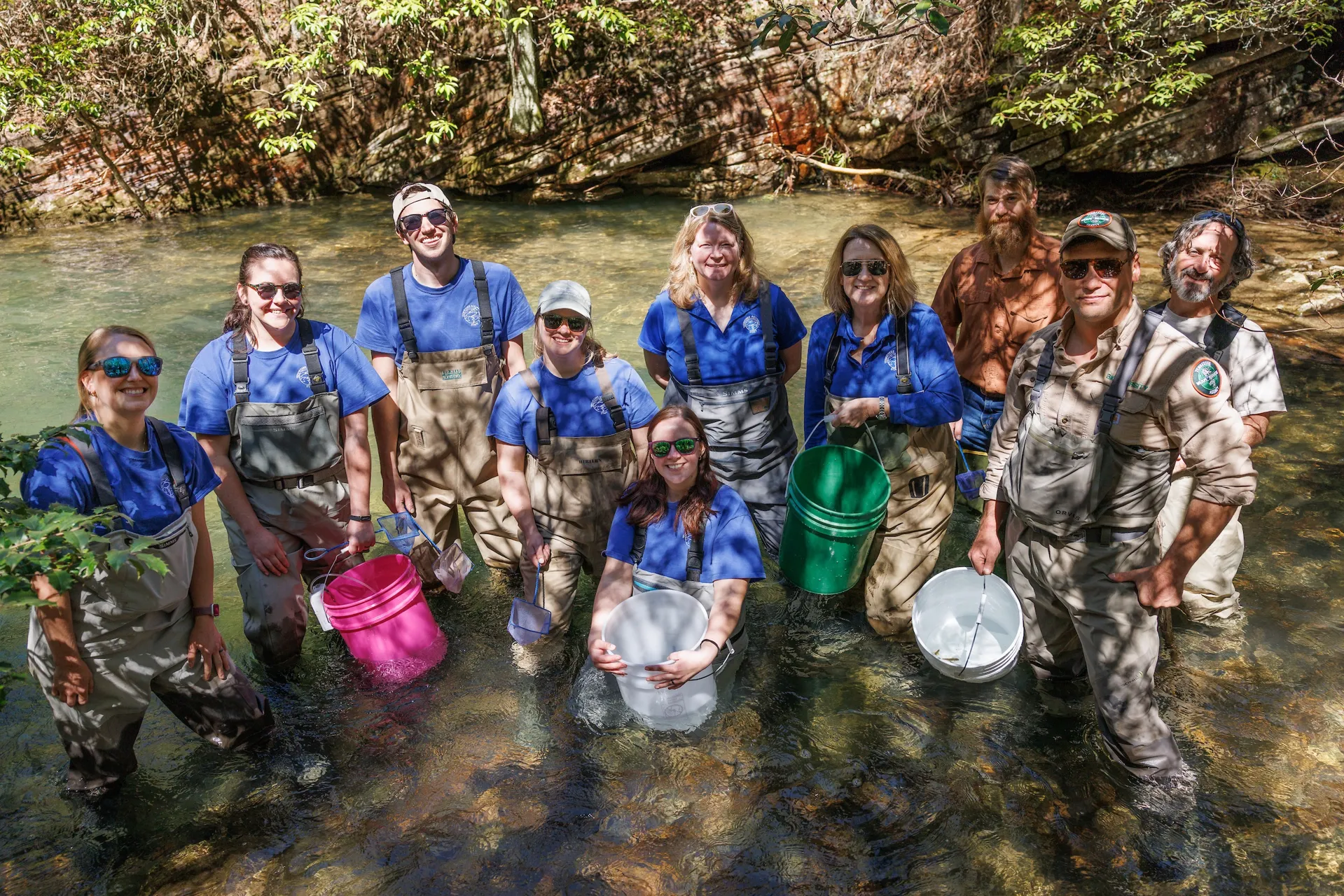Today, the Aquarium has been honored with timely recognition of its conservation efforts to preserve a beautiful, highly imperiled minnow just in time for Endangered Species Day.
The U.S. Fish and Wildlife Service (USFWS) designated members of the Tennessee Aquarium Conservation Institute alongside several of its staff as its Southeast Region 2024 Recovery Champions for their role in safeguarding the critically endangered Laurel Dace.
This award is conferred by USFWS to recognize “Service staff and their partners whose work is advancing the recovery of endangered and threatened species of plants and animals.”
“During the summer and fall of 2024, a prolonged drought emerged as a preeminent threat to the Laurel Dace, a freshwater minnow native to Tennessee,” the award language reads. “During this pivotal time, the Laurel Dace Rescue Team provided for the ongoing conservation and survival of the endangered fish by developing a water level monitoring protocol and planning for individuals to be collected and brought into captivity to maintain representation from the last two wild populations.
“In a short period, the team collaborated to rescue, transport, and house more than 200 fish while maintaining separation of individuals from each population. The Aquarium led the ‘Race for the Laurel Dace’ fundraising campaign, which helped significantly raise public awareness of the species’ plight and secure funding to help ensure the availability of the specialized emergency care needed for the rescued individuals. The Service’s diligent work to sample, collect, transport, and care for individual laurel dace were invaluable to this effort.”
The award specifically highlights the efforts of the following individuals:
- Sarah Kate Bailey – reintroduction biologist II – Tennessee Aquarium
- Geoff Call – supervisory biologist – U.S. Fish and Wildlife Service
- Stephanie Chance – conservation manager – Tennessee Aquarium
- Makenzie Foster – environmental education and outreach specialist – U.S. Fish and Wildlife Service
- Anna George – vice president of conservation science and education – Tennessee Aquarium
- Helaina Gomez – watershed coordinator – Tennessee Aquarium
- Abbey Holsopple – recovery biologist – Tennessee Aquarium
- Bernie Kuhajda – aquatic conservation biologist – Tennessee Aquarium
- Tigris Nevans – grants coordinator – Tennessee Aquarium
- Warren Stiles – fish and wildlife biologist – U.S. Fish and Wildlife Service
This award comes on the eve of the first annual Laurel Dace Day in Spring City, Tennessee, the community nearest to the Laurel Dace’s streams. This event will raise awareness of the town’s embattled neighbor through a packed schedule including live music, food vendors, educational activities and 5K race and half-mile fun run. The celebration will take place on Saturday, May 17, at the Spring City Nature Park.



The Laurel Dace is considered by scientists to be among the top 10 most-imperiled fish species in North America. Once occupying about a dozen streams as recently as a decade ago, its range has been reduced to just two streams atop Walden Ridge on the Cumberland Plateau near Spring City, Tennessee.
Last summer, the Conservation Institute, alongside members of the Service and faculty and students from the University of Georgia, leapt into action to rescue what Laurel Dace they could from streams that were rapidly dwindling in a prolonged drought afflicting Southeast Tennessee. Over the course of a trio of collection events, about 300 Laurel Dace were relocated into human care at the Conservation Institute and a USFWS hatchery.
These rescued Laurel Dace spent the winter in human care and most were reintroduced earlier this spring to their native streams just in time for their annual spawn. About 30 adults were held in systems at the Conservation Institute’s freshwater field station to serve as an “ark population.” By continuing to care for these adults, the Laurel Dace will survive event if a future extinction event affect its wild populations. In recent weeks, this resident population spawned, and hundreds of juvenile Laurel Dace are now developing rapidly in systems at the Conservation Institute.
For more information about the 2024 Recovery Champions recipients, visit https://www.fws.gov/program/recovery/2024-recovery-champions
Learn more about Laurel Day Day here: https://tnaqua.org/donate/race-for-the-laurel-dace/laurel-dace-day/
